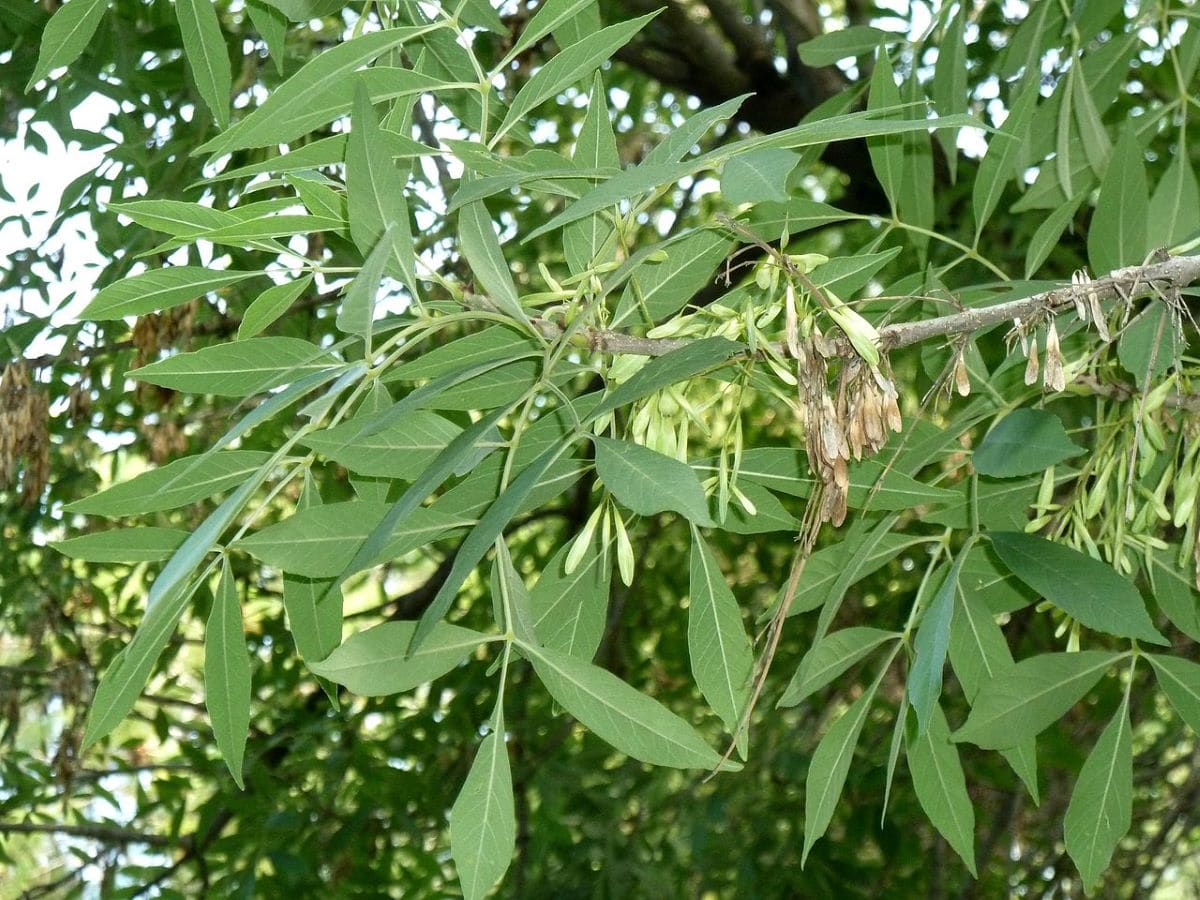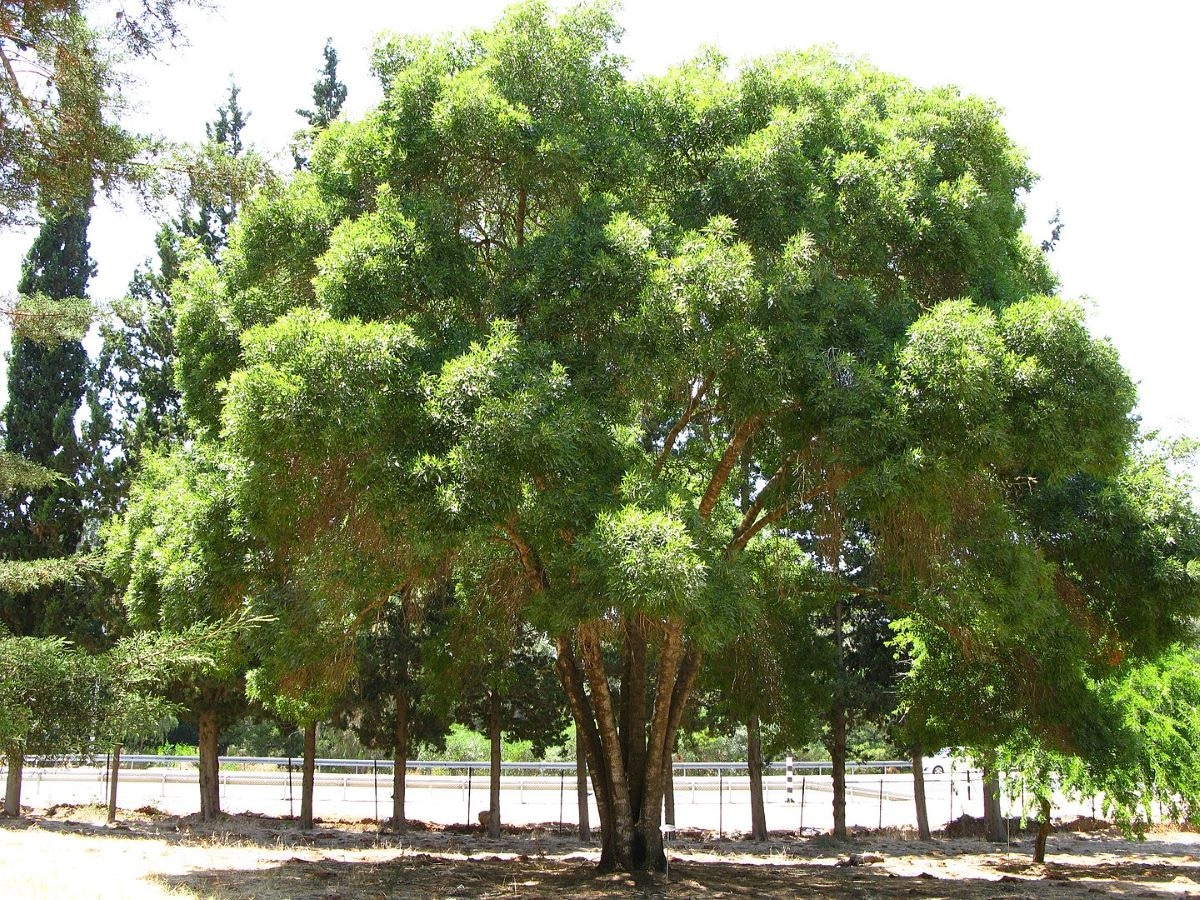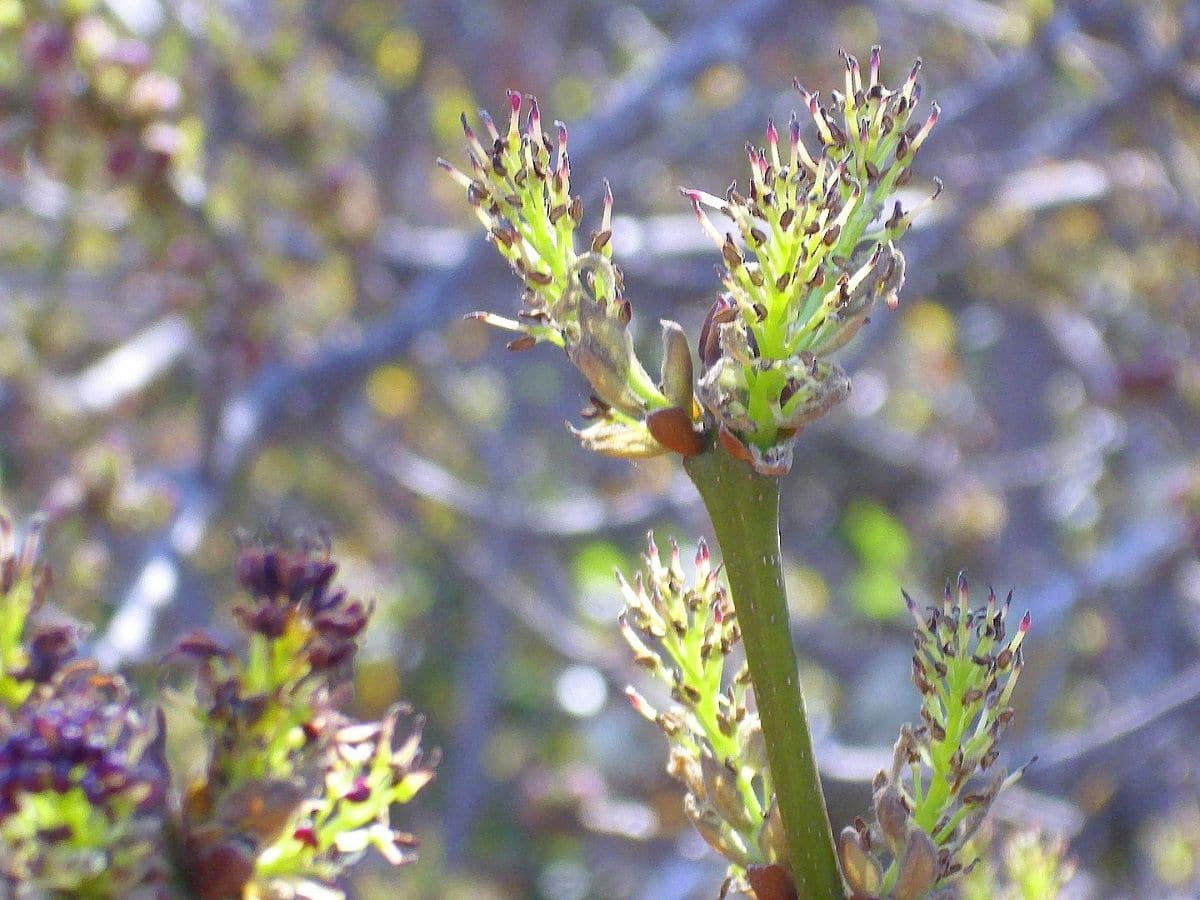
Image - Wikimedia / JMK
El Fraxinus angustifolia It is a tree that can be found in practically all of southern Europe, either in the wild, forming forests near rivers, or in gardens, where it is usually kept as an isolated specimen.
Its height and the distribution of its branches mean that the plant, once it matures, provides a lot of shade, which is greatly enjoyed during the summer. In fact, if you are one of those who celebrate picnics or those who like to read with their backs against the trunk of a tree, the narrow-leaved ash will undoubtedly be very useful for you. Meet him.
How is he Fraxinus angustifolia?

Image - Wikimedia / Arielinson
It is a deciduous tree whose scientific name is Fraxinus angustifolia, which belongs to the botanical family Oleaceae. In popular or common language it is known by the names of narrow-leaved ash or southern ash to differentiate it from other species that have larger leaves and/or can be found further north on the Old Continent.
The height of a fully grown specimen is 25-30 meters, and it has a rounded crown., very wide, 5-6 meters in diameter. The trunk is more or less straight, with a thickness of 50-80 centimeters.
From the buds of its branches, which are light brown in color, imparipinnate leaves sprout, formed by 7-9 pinnae or leaflets with slightly toothed margins, and green on the upper side and glabrous on the lower side, where we will also see nerves covered with short hairs.
When does it bloom?
In spring, usually at the beginning of the season but everything will depend on how quickly temperatures recover after winter. These flowers are grouped in terminal panicles and sprout from the axils of the branches.
Also, you should know that the narrow-leaved ash is dioecious. This means that to get seeds it is necessary that there be a male and a female specimen that, not only have to be close to each other, but also have to flower at the same time so that pollination can take place.
What is the fruit like?
The fruit of Fraxinus angustifolia it is a linear shaped chamber. A samara is a dry fruit made up of a seed which has a wing, which helps it get as far away from its parents as possible thanks to the force of the wind. In the case of our protagonist is in the branches of that year, towards the fall.
Caring for the Fraxinus angustifolia

The southern ash is a tree that is perfect in large gardens. It grows fast (at a rate of 50-60 centimeters/year), and adapts well to different climates as long as temperatures remain low at some point in the year.
And it is that it is a plant that can live in mild climates, such as the Mediterranean, but it needs the four seasons to be differentiated from each other. For this reason, we advise you to take the following into account:
Location
Because of the size that it reaches as an adult, and because of its own needs as a plant, it needs to be placed outside. And not only must it be outside the home, but it must also be planted as soon as possible in the ground, about ten meters from where we have installed a system of pipes or paved floors, since the roots are invasive.
Likewise, it is highly recommended to place it at a reasonable distance (6-7 meters) from other large plants, such as other trees or palm trees. This is not only because of its roots, but also because of its crown. Let's remember that it is very wide and, if we want it to have a correct development, it is interesting to plant it away from other plants that can prevent it from growing well.
Earth
El Fraxinus angustifolia It has a preference for soils with excellent drainage, and which also remain fresh all year round.. In the Mediterranean region, in fact, we can find it especially in those areas where the soil is siliceous (that is, in those composed mainly of small particles of organic matter, and that have good permeability), but it will grow just as well in alkaline soil if it absorbs water fast.
If it is going to be kept in a pot, it will be planted in universal substrates (such as this), with a pH between 6 and 8. If they do not have perlite, it will have to be mixed with 30% of this substrate, otherwise the roots could rot (you can get it here).
Irrigation
It is a tree with high water needs, although that does not mean that it has to be watered daily. During the summer months, especially if temperatures exceed 30ºC maximum and 20ºC minimum, it will have to be watered every two or three days if it doesn't rain.
During the rest of the seasons, we will space out the irrigations a lot, but only if the temperatures in our area are cool and/or if it usually rains. Otherwise, we will water once or twice a week.
Subscriber
As long as the growing season lasts, which coincides with the seasons of spring and summer, it will be highly advisable to pay it. For this, both (natural) fertilizers and fertilizers (which are chemical "fertilizers") can be used.
Be generic (like the universal fertilizer you find here) and specific (fertilizer for green plants, for example, which you can get here), or natural products such as guano (for sale here) or manure, will do very well for the tree.
Multiplication
The Narrow Leaf Ash multiplies by seeds. These have to be exposed to low temperatures before germinating, so it is advisable to sow them in winter in pots or seed trays with vermiculite and leave them outside.
But yes, we must avoid piling them up. In fact, if they are sown in seed trays, 1 or 2 will be placed in each alveolus; and if pots are used, they will be placed equally few, and separated.
Rusticity
El Fraxinus angustifolia resists moderate frost very well, being able to live in areas with minimum temperatures of up to -18ºC. In addition, maximum temperatures of 35-38ºC do not harm it, but in these conditions it needs to have plenty of water at its disposal.
What uses does it have?

Image - Wikimedia / Marija Gajić
All the Fraxinus species were widely used in the dehesas, but now they are used more as a garden tree, or even sometimes as a shade plant in streets, but in these they do not always have the space they need to grow properly.
What did you think of the Fraxinus angustifolia?